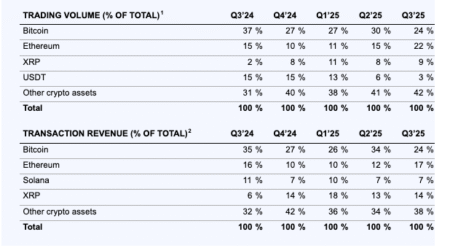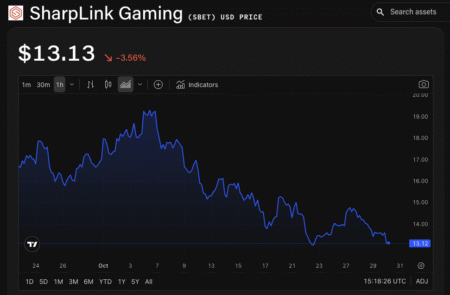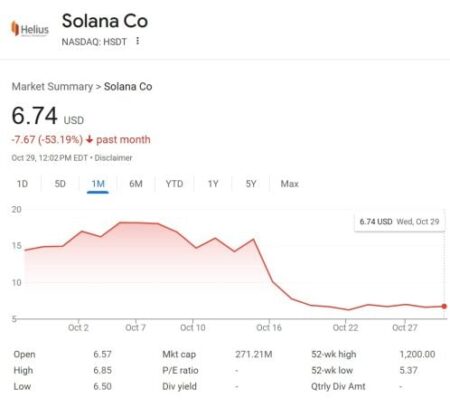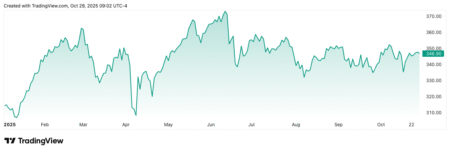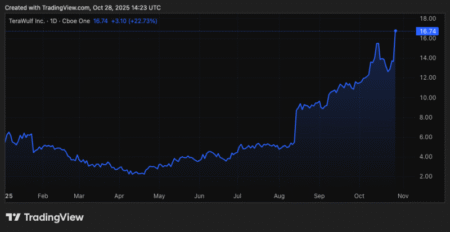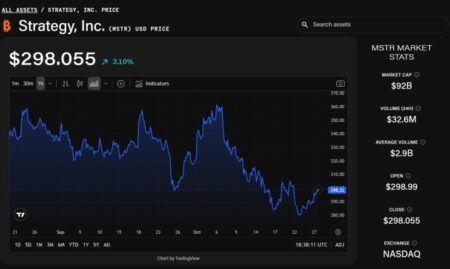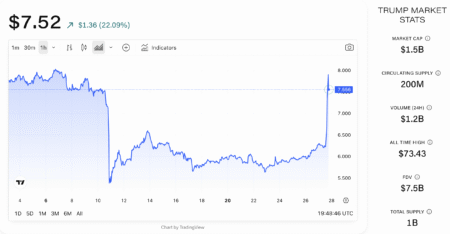Bitcoin-Treasury Firm Strategy Reports Third-Quarter Earnings: A Closer Look at MSTR Performance
In a recent earnings report, Bitcoin treasury firm Strategy (ticker: MSTR) revealed a profit of $2.8 billion for the third quarter, a significant decline from its unprecedented $10 billion profit in the previous quarter. This downturn comes as the momentum of Bitcoin’s summer rally wanes, and the company’s valuation premium continues to compress. Although the results exceeded analyst predictions—posting diluted earnings of $8.42 per share compared to expectations of $8.15—they represent the company’s weakest performance since it adopted fair-value accounting in January.
Examining Stock Performance Amid Price Fluctuations
After the earnings report, Strategy’s stock closed at about $254, marking a six-month low. However, the shares experienced a bounce back of roughly 4% in post-market trading. Concurrently, Bitcoin was trading around $107,000, down approximately 15% from its all-time high earlier in October. The declining Bitcoin price has impacted Strategy’s mNAV multiple, which measures the company’s enterprise value against its Bitcoin holdings, reducing it to about 1.2x—the lowest level since March 2023. This decrease starkly contrasts its peak of 3.9x last November when Bitcoin surged following Donald Trump’s election victory.
Accumulation of Bitcoin: A Slower Pace
As the largest Bitcoin treasury company, Strategy added roughly 43,000 Bitcoins during the third quarter, raising its total holdings to 640,808 BTC, valued at nearly $69 billion at current market prices. This quarter saw the slowest accumulation rate this year, a stark contrast to 69,000 BTC acquired in Q2 and over 80,000 BTC in Q1. The tapering weekly purchases coincide with weakening mNAV premiums, suggesting a cautious approach from investors as market volatility persists.
Leveraging Preferred Stocks for Capital Raising
To maintain its Bitcoin acquisition strategy, Strategy continues to rely on a suite of high-yield preferred stocks, branded with tickers such as STRC, STRF, STRK, and STRD. These instruments are designed to raise capital for Bitcoin purchases without the need for issuing common shares. Recently, the company announced an increase in the dividend on its variable-rate STRC to 10.5% for November, up from 10.25% in the previous month. The higher dividend rate is strategically aimed at attracting investors during price dips, providing a cushion for ongoing operations.
Financial Strategy Amidst Market Challenges
The increasing dividends on preferred stocks are primarily funded through ongoing equity and preferred issuance rather than cash flow, permitting Strategy to continue its Bitcoin purchasing spree even as both its stock and mNAV tighten. This strategy allows the company to take advantage of lower prices while minimizing dilution in common shares. The adaptive financial approach is crucial for retaining investor confidence and sustaining growth despite market fluctuations.
Future Outlook: Navigating Volatility
Looking ahead, Strategy faces several challenges as Bitcoin continues to experience price volatility. While the current profit report reflects a downturn, the company’s asset accumulation strategy remains intact. As it actively navigates this complex landscape, Strategy must balance its capital-raising initiatives with investor expectations and market conditions. With Bitcoin’s future trajectory uncertain, the focus will likely shift toward maintaining a robust portfolio while strategically positioning itself for potential market recovery.
In summary, Strategy’s performance in the third quarter highlighted both the resilience and vulnerabilities of Bitcoin treasury firms navigating a dynamic market. The adaptive strategies employed by the company, from slow accumulation to leveraging preferred stocks, demonstrate its commitment to not only weathering current adversities but also seizing future opportunities in the ever-evolving cryptocurrency landscape.










